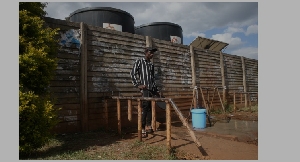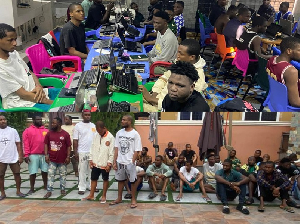The government has started implementing various health interventions in airports, dry ports and border crossings to curtail the cholera outbreak in the country.
This comes after an alarming increase in the cholera outbreak in Africa that has spread to at least 10 countries, with the situation in Zambia and Zimbabwe being “very serious.”
The border health coordinator from the ministry of Health, Mr Amour Selemani, and told The Citizen last week that though the widespread spread of cholera is not high, the epidemic has also struck several regions in Tanzania.
“So far, we are conducting various interventions in Songwe, Tunduma Kagera, Simiyu, Mwanza and Mtwara to identify the potential of cholera (case definition),” he said.
According to him, the government has set aside some isolation centres in some of the aforementioned regions and has also strengthened relations between border points and regional hospitals so that when a patient is detected with cholera, he or she could be transferred to the hospital for treatment immediately.
Mr Amour stressed that they are also spraying vehicles where cholera patients are found to decontaminate them.
“We are examining the quality of water by measuring the amount of chlorine and we are utilising border committee meetings to share experiences on how to control the disease,” he said.
Reports from the ministry of Health indicate that between December 18, 2023 and January 29, 2024, a total of 698 cases have been detected, with 16 fatalities so far.
Simiyu Region reported 23, two deaths; Mwanza 164 patients, two deaths; Shinyanga 158 patients, six deaths; Kagera 63 patients, four deaths; Geita 12 and one death.
In the Singida Region, seven patients no death; Tabora, 21 patients no death; Katavi, 8 patients no death; Mara, 30 patients and one death.
An earlier report from Unicef Regional Health Adviser for East and Southern Africa, Mr Paul Ngwakum, said that about 200,000 cases have been reported and more than 3,000 lives have been taken by the disease.
He mentioned that out of 10 countries with active outbreaks, Ethiopia, Mozambique, Tanzania, Somalia, Zambia and Zimbabwe are in an “acute cholera crisis.”
“The key drivers are long-term poor water sanitation and hygiene conditions, exacerbated by changing weather patterns, climate change leading to floods and droughts, end-of-year festivities, inadequate community sensitization [and] late care-seeking behaviour for those that are affected,” Ngwakum said.
“Children, unfortunately, carry the lion’s share of the burden,” he said. “For example, over 52 percent of the cases in Zambia are children less than 15 years old.”
Ngwakum said Zambia and Zimbabwe are experiencing a rapid rise in the number of cases since the Christmas and New Year holidays, with 1,000 cholera cases reported a week in each of the neighbouring countries.
“The situation in Zambia and Zimbabwe is very serious,” he said. “These two countries are the most affected in the region. In Zambia, nine out of 10 provinces are reporting cases.”
The disease’s fatality rate is alarmingly high, Ngwakum said, with 4 percent of the more than 9,000 cases ending in death.
“This is extremely high because the acceptable threshold is below 1 percent,” he said. “Since the beginning of 2024 alone, Zimbabwe has recorded over 17,000 cases, with about 384 deaths. ... and these continue to spread geographically.”
It's the content that counts
We come to you. We are always looking for ways to improve our stories. Let us know what you liked and what we can improve on.
Africa News of Monday, 5 February 2024
Source: bbc.com













